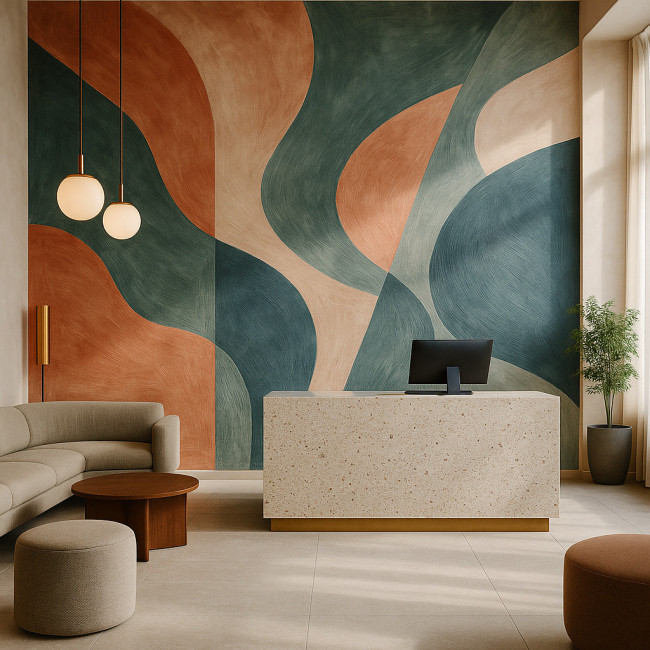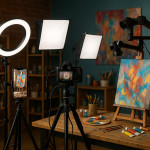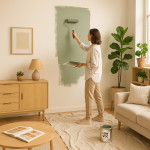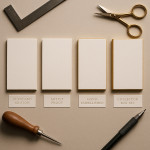Interior designer partnerships: pitch palettes that land site-specific murals
Want your next site-specific mural to move from moodboard to wall? This guide shows you how to research an interior designer's vision, craft a palette narrative they cannot refuse and deliver a pitch deck that secures the commission—without under-quoting or missing a deadline.
Why interior designers hunt for mural partners

Interior designers juggle traffic flow, brand storytelling and lighting plans. A site-specific mural solves three pain points at once: it anchors the colour scheme, hides awkward architectural elements and adds Instagram-ready moments that boost footfall. That is why design studios increasingly outsource murals instead of buying framed prints.
- Budget efficiency : A wall-scale artwork costs 30 % less per square metre than custom millwork.
- Brand recall : Visitors remember hand-painted graphics 2× longer than neutral walls in hospitality studies.
- Sustainability : Low-VOC paints and mineral pigments support ESG reporting goals highlighted in eco-conscious material briefs.
Decode the site before you pick a palette
1. Gather spatial data
Request a reflected ceiling plan, sun-path study and finish schedule. These documents reveal shadow lines and glare zones that influence how your colours read throughout the day.
2. Audit brand DNA
Browse the client's existing moodboards, logos and collateral. For corporate spaces, pull HEX or Pantone values from their style guide. For hospitality, analyse guest persona decks stored on the studio's image-design resources page to note emotions they want guests to feel.
3. Map fixed finishes
Scan joinery, flooring and textiles. A terrazzo bar counter might inspire speckled paint splatters, while brushed brass fixtures pair with ochre highlights. Refer to best practices in material sourcing for large-format surfaces to check compatibility.
Craft a colour narrative that sells
Interior designers buy stories, not swatches. Build a narrative arc with three palette tiers:
- Foundation hues – neutral tones that echo the flooring and keep maintenance easy.
- Brand heroes – two shades lifted directly from the client's marketing kit.
- Accent sparks – seasonal or biophilic notes that add movement and tie into current colour-psychology trends.
When presenting, assign each tier an emotion: stability, recognition, excitement. Designers immediately visualise guest journeys and sign off faster.
Build a pitch deck that wins the room
Slide-by-slide checklist
| Slide | Key content | Muralist tip |
|---|---|---|
| 1. Context | Site photos + pain points | Mark problem areas with call-outs |
| 2. Palette story | Three tiers, emotion labels | Show swatches on actual wall photos |
| 3. Concept sketch | Loose strokes + focal zones | Use AR overlay as in VR mock-ups workflows |
| 4. Process timeline | Prep, paint, seal, cure | Highlight client approval checkpoints |
| 5. Investment | Line-item budget | Offer maintenance add-on |
Price and timeline benchmarks
Below are typical ranges for an indoor site-specific mural of 30 m² in a commercial lobby:
- Design & revisions : €900 – €1 500
- Surface prep : €10/m² (includes primer)
- Painting labour : €45 – €60/m²
- Eco topcoat : €6/m² (low-VOC)
- Total project time : 12 – 15 working days, excluding curing
Add a 15 % contingency for lift hire or out-of-hours access, echoing advice from urban mural budget builders.
Collaboration workflow with interior designers
- Design brief kickoff – one-hour video call to confirm scope.
- Palette approval – swatch board delivered within five days.
- Concept sketch – feedback loop limited to two rounds.
- Mock-up on wall photo – final green light.
- On-site execution – daily progress photos sent by 17:00.
- Post-install review – walk-through with snag list and sealant demo.
Common mistakes to avoid
- Ignoring HVAC vents that alter pigment curing.
- Using exterior acrylics indoors—sheen mismatch shows under track lighting.
- Overloading the wall with brand colours; keep them below 40 % of the surface.
- Skipping adhesion tests on specialty plasters mentioned in eco-certified material guides.
Mini case study: co-working lobby, Lyon
The design studio needed a welcoming mural that doubled as wayfinding. We analysed foot traffic, selected a terracotta-sage-slate palette and proposed geometric waves leading visitors to meeting rooms. The site-specific mural covered 42 m², cost €3 400 and boosted booking enquiries by 18 % within two months, according to the client's CRM data.
Ready for a quick quiz?
FAQ
- How early should I contact an interior designer before painting?
- Reach out as soon as wall finishes are specified—typically eight weeks before the grand opening—to slot primer and curing into the build schedule.
- Can I reuse a mural concept for another client?
- Only if your contract retains intellectual property rights. Many designers request exclusivity within a market radius, so clarify this clause up front.
- What finish works best for high-traffic corridors?
- Scrubbable matte or eggshell with a clear abrasion-resistant topcoat keeps colours vibrant without unwanted glare.
- Do I need professional indemnity insurance?
- Yes. Most commercial interiors require €1 million cover for design liability and €2 million for public liability before allowing on-site work.
Take the next step
Now you know how to align palettes, pricing and process with interior designers' needs. Draft your three-tier colour story today and email it to one studio you admire. The wall of their next project could soon showcase your site-specific mural.
Need a template? Download our free pitch deck and start winning briefs now.











